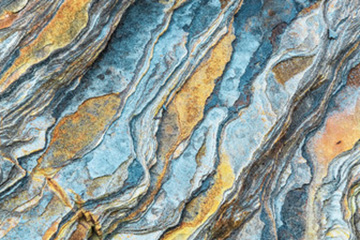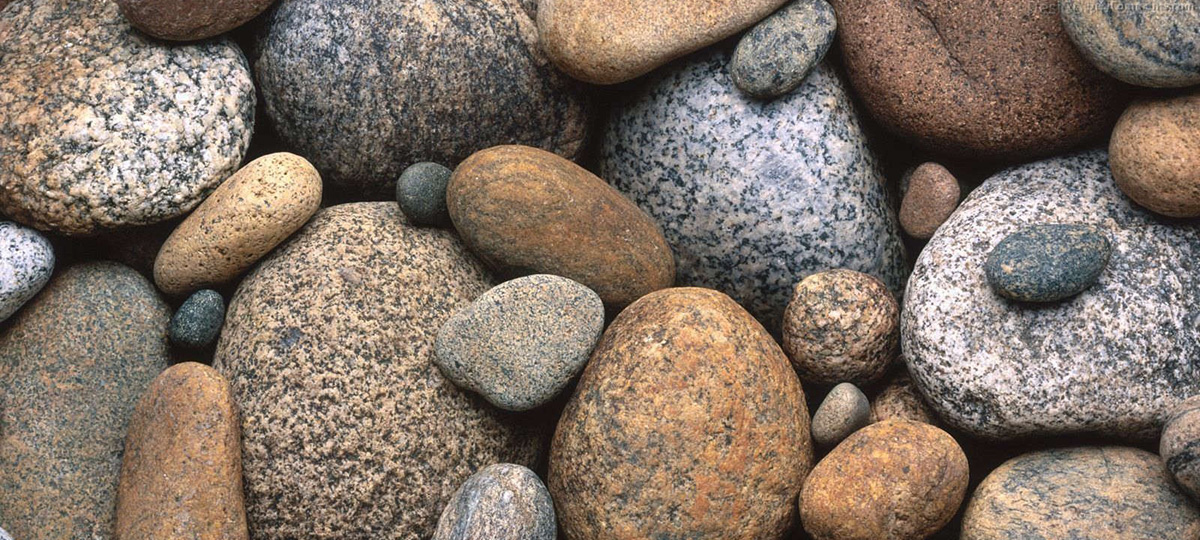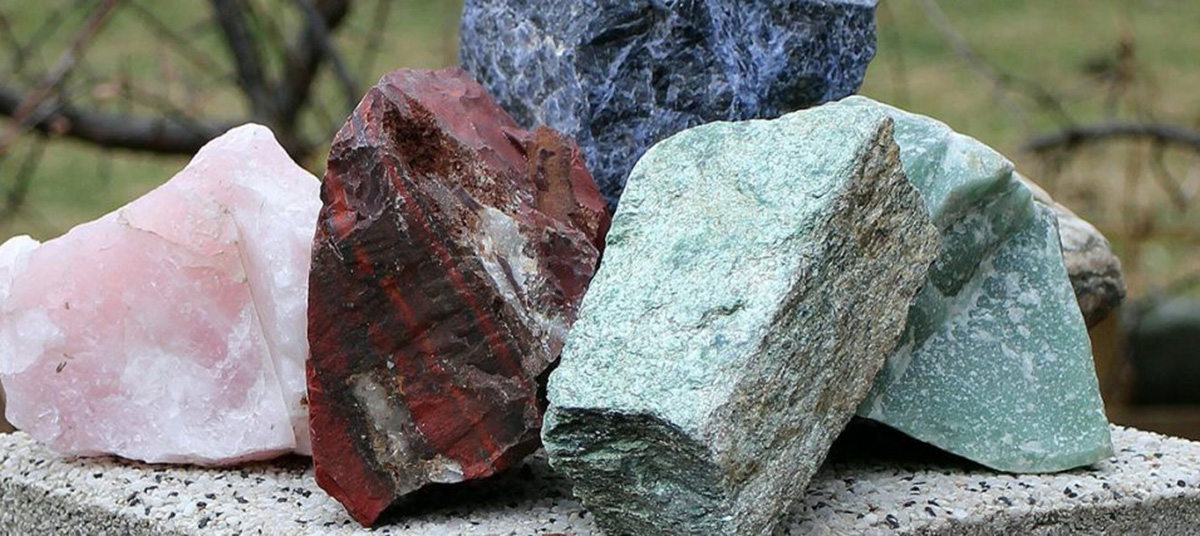Minerals and rocks, commonly mistaken as synonymous, possess unique characteristics in terms of composition, formation, and properties. This discussion will delve into the primary distinctions between these two entities, offering comprehensive descriptions and explanations to clarify their differences.
Composition
Minerals are naturally occurring inorganic solid substances with a specific chemical composition and a crystalline structure. Each mineral possesses a unique chemical formula that defines its composition. For instance, the mineral quartz has the chemical formula SiO2, which signifies that it comprises one silicon atom and two oxygen atoms. Examples of other minerals include feldspar (KAlSi3O8 – NaAlSi3O8 – CaAl2Si2O8), mica (KAl2(AlSi3O10)(OH)2), and calcite (CaCO3).

In contrast, rocks are naturally occurring aggregates or mixtures of minerals. They are composed of two or more minerals and may also encompass organic matter or other materials. The composition of rocks varies significantly depending on their type. For example, igneous rocks, formed from the solidification of molten material, consist of minerals such as quartz, feldspar, and mica. Conversely, sedimentary rocks, formed from the accumulation and lithification of sediments, may contain minerals like calcite (CaCO3), dolomite (CaMg(CO3)2), and gypsum (CaSO4·2H2O).
In addition to minerals, rocks may also contain other constituents like organic matter, fossils, and even water, which contribute to their overall composition.
Formation
The formation processes of minerals and rocks differ significantly, constituting another key distinction between the two.
Minerals form through geological processes like crystallization from magma, precipitation from solution, or alteration under heat and pressure. These processes often occur over extended periods and involve interactions between various chemical and physical factors, including temperature, pressure, and the presence of other minerals. For example, quartz forms through the crystallization of silica-rich magma or the precipitation of silica from a solution, while calcite can form from the reaction of calcium-rich fluids with carbonate minerals.

On the other hand, rocks form through the consolidation or cementation of pre-existing materials or the transformation of one rock type into another due to the influence of heat, pressure, or chemical fluids. The three primary types of rocks are igneous, sedimentary, and metamorphic.
- Igneous rocks originate from the solidification of magma or lava and can occur on the Earth’s surface or beneath it. Examples include granite, which forms from the slow cooling of magma deep within the Earth’s crust, and basalt, which forms from the rapid cooling of lava flows on the surface.
- Sedimentary rocks form from the accumulation and lithification of sediments. Examples include sandstone, formed from the cementation of sand-sized grains, and limestone, which forms from the accumulation of calcareous skeletal remains and precipitated calcium carbonate.
- Metamorphic rocks result from the alteration of pre-existing rocks through heat, pressure, or chemical fluids. For instance, shale, a sedimentary rock, can transform into the metamorphic rock slate under the influence of heat and pressure during mountain building processes.
Properties
Minerals and rocks exhibit different physical and chemical properties, which constitutes another key distinguishing factor.
Physical properties of minerals include hardness, cleavage, fracture, specific gravity, color, luster, and crystal form. These properties stem from the mineral’s chemical composition and crystal structure. For example, quartz has a hardness of 7 on the Mohs scale, a conchoidal fracture, a specific gravity of 2.65, and a vitreous luster.

In contrast, the physical properties of rocks depend on their mineral composition and texture. Igneous rocks like granite and basalt have a crystalline texture and are generally harder and more resistant to weathering than sedimentary rocks like sandstone or shale, which have a clastic texture and are composed of grains or particles of other minerals. For instance, granite, an igneous rock, has a coarse-grained texture, while shale, a sedimentary rock, has a fine-grained, laminated texture.
Chemical properties of minerals include reactivity with acids, magnetism, radioactivity, and optical properties. These properties are also determined by the mineral’s chemical composition and crystal structure. For example, calcite reacts with acids to produce carbon dioxide gas, while magnetite exhibits magnetic properties due to the presence of iron.
Chemical properties of rocks depend on the minerals that constitute the rock, and can include properties such as acid resistance, magnetic susceptibility, and mineral content. For example, limestone, a sedimentary rock primarily composed of calcite, reacts with acids and can be dissolved over time by acidic groundwater, forming caves and sinkholes. In contrast, quartzite, a metamorphic rock derived from sandstone, is resistant to acid and exhibits a high degree of hardness and durability.
Minerals and rocks are distinct in their composition, formation, and properties. Minerals are naturally occurring inorganic solid substances with specific chemical compositions and crystalline structures, while rocks are naturally occurring mixtures or aggregates of minerals. The formation processes of minerals involve geological processes such as crystallization from magma, precipitation from a solution, or alteration under heat and pressure. Rocks form through the consolidation or cementation of pre-existing materials, or by the transformation of one rock type into another due to the influence of heat, pressure, or chemical fluids. The physical and chemical properties of minerals and rocks also differ, with minerals exhibiting properties determined by their chemical composition and crystal structure, and rocks displaying properties dependent on their mineral composition and texture.

Featured Posts
-

Rock Identification
Rock identification is the process of examining and analyzing a rock’s physical and chemical characteristics in order to determine its type, composition, and history. This …
-

Rock Cycle
The rock cycle is a geological process that illustrates the continuous transformation and interaction among the three major types of rocks: igneous, sedimentary, and metamorphic. …
-

Rock Basics
Rocks are naturally occurring, solid aggregates of minerals that make up a significant portion of the Earth’s crust. They are formed through various geological processes …
-

Mohs Hardness Scale
The Mohs Hardness Scale is a universally recognized tool used to classify the hardness of minerals based on their ability to scratch one another. Developed …

